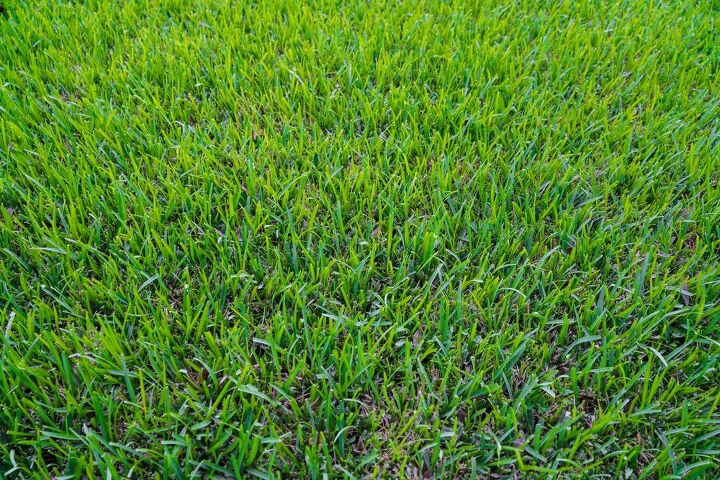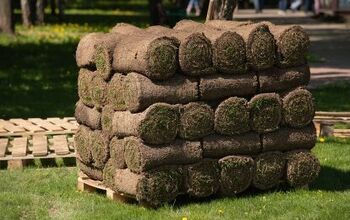St. Augustine Grass Vs. Crabgrass: What's The Major Difference?

Lawn care is often more complicated than many people realize. There are many invasive plants that look similar to desirable plants that you’d actually want in your lawn. For instance, St. Augustine grass and crabgrass look almost the same, but they are two very different plants.
St. Augustine grass is a turf grass that grows smoothly and evenly, perfect for lawns in subtropical and coastal areas. Meanwhile, crabgrass is an overabundant, opportunistic grassy weed that can take over your lawn. Although the two plants look similar, St. Augustine is a desirable grass, and crabgrass is an unwanted weed.
Do You Need Lawn and Tree Maintenace Pros?
Get free, zero-commitment quotes from pro contractors near you.

What Is St. Augustine Grass?
St. Augustine grass is very common in the southern United States. In fact, it’s the most widely used warm season turf grass in that area. It’s salt-tolerant and well-suited for humid subtropical and coastal areas.
Also commonly called carpetgrass, St. Augustine grass is tolerant to low moisture and extremely high temperatures. It creates a smooth, even turf, making it perfect for southern lawns. Plus, it only requires infrequent mowing, and it retains its green color longer than other types of grass.
What Does St. Augustine Grass Look Like?
St. Augustine grass is compact with a dark green color in the spring and summer months. It has broad, flat leaves and is known for maintaining its color even during droughts. In the cooler months, St. Augustine grass is a light tan color.
This type of grass has stems that creep along the ground. Its leaves can emerge from its stems alternately or opposite each other.
Why Is St. Augustine Grass Good For Your Lawn?
St. Augustine grass is great for lawns in hotter areas because it’s very easy to care for. You don’t have to mow it very often, and it only needs about an inch of water per week. Plus, St. Augustine grass has a coarse texture that can easily cover up any issues in your lawn.
How Do You Plant St. Augustine Grass?
Keep in mind that St. Augustine grass is not tolerant of cold temperatures. Therefore, if you don’t live in a warmer climate, it may not be the best choice for your lawn.
St. Augustine grass thrives in sandy soil, and it’s best to keep it tall. Experts recommend keeping it at a minimum of three inches, but at four or five inches, it’s at its hardiest.
The best time to plant St. Augustine grass is in the spring or summer, when temperatures are between 70 and 90 degrees Fahrenheit. You’ll want to plant the plugs in full sun at least 90 days before the first frost of the year.
Here’s a step-by-step guide to planting St. Augustine grass on your lawn:
Step 1. Measure The Area
The first step is to measure the area where you want to plant the St. Augustine grass. You’ll want to use plugs, which are rooted pieces of sod. Keep in mind that 18 plugs will cover about 32 square feet.
Step 2. Prepare The Area
Next, you’ll want to make sure the area is well-suited for St. Augustine grass. Remove any old vegetation and sod using a sod-cutter, which you can rent from most hardware stores. Next, kill any existing weeds by applying a non-selective herbicide two weeks before planting.
Step 3. Apply Fertilizer And Mulch
Evenly apply fertilizer and mulch over the entire planting area. There are various types of fertilizer and mulch available that are made specifically for St. Augustine grass lawns.
Step 4. Water The Area
Thoroughly water the area until the fertilizer and mulch are completely saturated and will not absorb any more water.
Step 5. Dig Holes
Now you’re ready to dig holes for the St. Augustine grass plugs. You’ll want to dig them in a diagonal planting pattern, so that each group of four holes forms a diamond. The holes should be spaced one foot apart, and each hold should be slightly larger than the plug’s root ball.
One tip to make this step quicker and easier is to rent a grass plugging tool. Grass plugging tools are generally available at hardware stores, and they create perfectly sized holes with minimal effort.
Step 6. Place The Plugs
Firmly press each plug into a hole, ensuring it’s level with the surrounding ground. If there’s any extra space, you can add a bit of nutrient-rich soil.
Step 7. Water The Plugs
For the next seven to 14 days, water the plugs daily until they are firmly rooted and beginning to spread. After they’re established, you’ll only need to water them once a week. However, if you’re getting plenty of rainfall, it’s not necessary to water them after they’re established.
What Is Crabgrass?
Crabgrass is a lawn weed that’s generally considered overabundant. It’s annual rather than perennial, meaning that it doesn’t survive year to year. Instead, its life cycle is completed in one year.
However, just one crabgrass plant can produce 150,000 seeds within its life cycle. These seeds can then sit in the soil for up to 30 years before they sprout. Clearly, this is a weed that can be very difficult to control!
Unlike other grassy weeds, crabgrass has a very low profile. This means that the lawnmower blade passes over it without hitting it, making it easier for the crabgrass to survive. Plus, crabgrass has very tough stalks that hold up well against foot traffic, even in high-traffic areas.
Typically, crabgrass begins to grow in the early summer. It is a drought-tolerant weed that absolutely thrives in hot weather. In fact, it’s often the last plant on the lawn to die off. Crabgrass usually sticks around until the frosts of autumn.
What Does Crabgrass Look Like?
Crabgrass earned its name from its stems, which have a resemblance to crab legs. As a plant, crabgrass generally appears as a coarse, green clump of grassy weed. It has leaf blades with a thickness of about a quarter-inch, about the same width as a pencil.
Crabgrass grows in a starlike pattern. As its stems grow larger and fall to the ground, crabgrass expands outward.
Why Is Crabgrass Bad For Your Lawn?
Not only is crabgrass an unattractive weed, but it can completely take over your lawn! It’s capable of dominating other grasses and plants in the area. It’s a very opportunistic weed that quickly takes root in any areas of your lawn that are thin or bare.
Plus, crabgrass can also crowd out good grasses and desired plants. It’s very invasive and will compete with other plants for water and nutrients from the soil. This can make it very challenging (and almost impossible) for the healthy grass in your yard to continue to flourish.
How Do You Get Rid Of Crabgrass?
When it comes to crabgrass, prevention is key. Be proactive and apply a crabgrass preventer or pre-emergent herbicide in the early spring. This way, you eliminate crabgrass before it even starts to take root and grow in your lawn.
Post-emergent herbicides are also an option for crabgrass removal, but it’s best to keep it from growing in the first place. One way to do this, aside from using a pre-emergent herbicide, is to maintain good lawn care.
An important aspect of lawn care is allowing your grass to grow to its optimal length. You’ll want to adjust your lawnmower blade to do this; a height of three inches or more is best. Remember, the longer your grass is, the longer its roots are. Longer roots equal less room for other plants (such as crabgrass) to grow and thrive.
A few other aspects of lawn care that can help prevent crabgrass are aerating and overseeding your lawn. Both of these practices will discourage crabgrass from taking root.
In addition, you may want to do a simple soil test to check that your lawn has proper levels of nutrients. To resolve any nutrient deficiencies you discover through the soil test, using a natural fertilizer should do the trick.
St. Augustine Grass vs. Crabgrass: How To Tell Them Apart
St. Augustine grass and crabgrass look similar, but they’re very different. St. Augustine grass is recommended for lawns in the southern United States. Meanwhile, crabgrass is an invasive grass weed that can take over your lawn.
Generally, crabgrass has wider blades with fold lines down the center. It grows low to the ground in a star-shaped pattern.
St. Augustine grass has slightly slimmer blades than crabgrass and grows to be much taller than crabgrass. Rather than looking rough and unkempt like crabgrass, it appears much more smooth and even.
Do You Need Lawn and Tree Maintenace Pros?
Get free, zero-commitment quotes from pro contractors near you.

Related Questions
Is St. Augustine grass shade tolerant?
Yes, some types of St. Augustine grass are shade-tolerant. There are over ten cultivated varieties of St. Augustine grass, and some are more tolerant to shade than others. If you live in a shaded area, be sure to choose a variety that will be able to survive without much sunlight.
Why is my St. Augustine grass turning yellow?
Often, St. Augustine grass that has turned yellow has been watered too much. Since rain leaches nitrogen from the soil, the grass is then deficient in nitrogen, and this can lead to yellowing.
Why is crabgrass so hard to kill?
Crabgrass is difficult to kill because it releases so many seeds during its short lifespan. One crabgrass plant can release 150,000 seeds. These seeds can then sit in the soil for up to 30 years before they begin to sprout.
This is why it’s best to be proactive and prevent crabgrass in the first place. It’s much more difficult to get rid of it once it has already taken root.
Related Articles

With a lifelong passion for writing plus strong enthusiasm for home improvement and DIY projects, joining the team at Upgraded Home was an easy choice. Jessica Allen likes to share helpful information with current and aspiring homeowners. Aside from writing, Jessica loves doing yoga, playing the piano, and dabbling in graphic design.
More by Jessica Allen



























